Intro to Tapa Puzzles
Welcome to Grandmaster Puzzles, home to some of the best hand-crafted logic puzzles in the world. This page contains a collection of some of our favorite Tapa, a shading puzzle created by puzzlemaster Serkan Yürekli, that is one of over twenty genres of puzzle regularly featured here at GMPuzzles.
All of the content on this page is contained in this PDF packet which you can download to try out this puzzle style. The PDF contains 5 easy puzzles, 5 of our “Best Tapa” as voted on by our solvers at higher difficulties, and a few variations of Tapa.
If you enjoy Tapa puzzles, even more Tapa puzzles can be found in The Art of Puzzles and in Tapa and Variations, all Tapa in these books by Serkan Yürekli.
Rules: Blacken some cells to create a single connected wall called the “Tapa”. Numbers in a cell indicate the length of consecutive shaded blocks in the neighboring cells. If there is more than one number in a cell, then there must be at least one white (unshaded) cell between the black cell groups. Cells with numbers must remain white. Also, the shaded cells cannot form a 2×2 square anywhere in the grid.
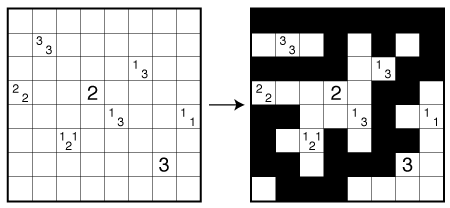
Tips on how to solve:
1. To get started on many Tapa puzzles, look for big clues without a lot of space. With five cells around it total, but one white cell needed to separate the shaded segments, the 22 on the left side is a good example.
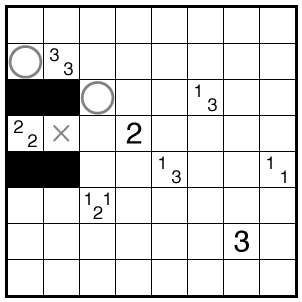
2. 33 is another big clue to get familiar with. Consider the two circled cells above. Only one will be shaded, and then that group of three cells will be surrounded by empty cells. Shading the circle on the left border will strand the Tapa, so go with the other choice.
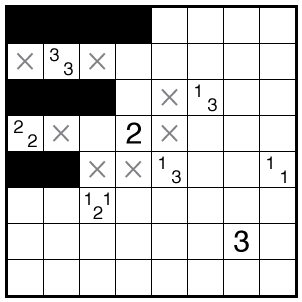
3. Did you notice the ×’s added around the 2 in the last image? Whenever you shade near a singleton clue, you may make other cells unreachable around it. With those cells marked, it is clear that the Tapa has to pass along the top of the 2 clue.
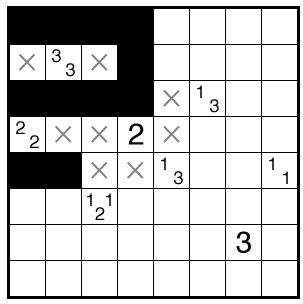
4. As you make progress, you’ll find clues with only a few options left. Consider the 13 clue that touches the 2 clue. There are two ways this can be shaded now. Three cells are shared between these two choices, and they can all be marked for sure.
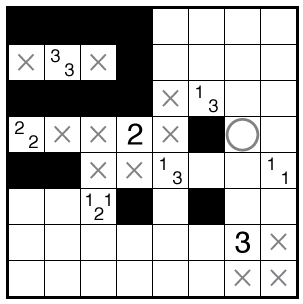
5. Also watch out for places where the Tapa can be stranded. Notice that the circled cell in the previous image is a “chokepoint”. If the Tapa does not go through this cell, it will never be connected. Harder puzzles will hide chokepoints in unexpected spots.
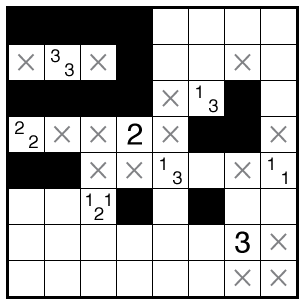
6. Towards the end of a puzzle, you’ll be able to identify a lot of cells that must be shaded to keep the whole Tapa connected.
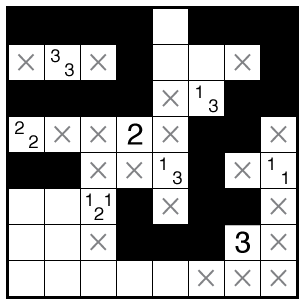
7. The last rule to learn is that the Tapa never has a 2×2 shaded area. When three cells out of four in a 2×2 box are shaded, the last is white. For example, the lower-left corner is white because of this rule. There are many different ways this rule can come into play.
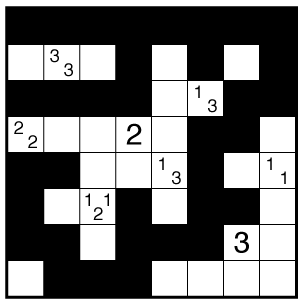
Some Easy Tapa:
A Little of Everything by Thomas Snyder (originally posted on 02/11/13)
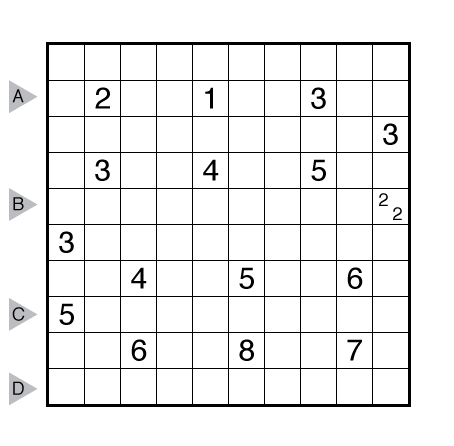
Six Empty Rows and Columns by Grant Fikes (originally posted on 08/19/14)
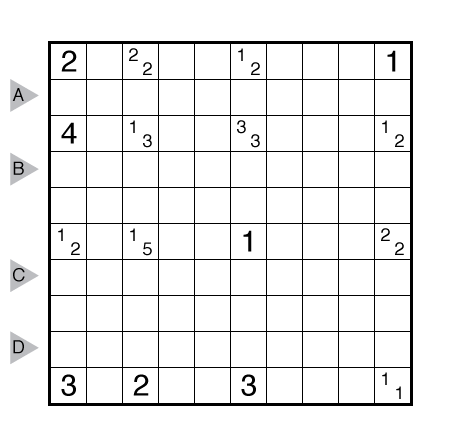
Columns by Prasanna Seshadri (originally posted on 03/16/15)
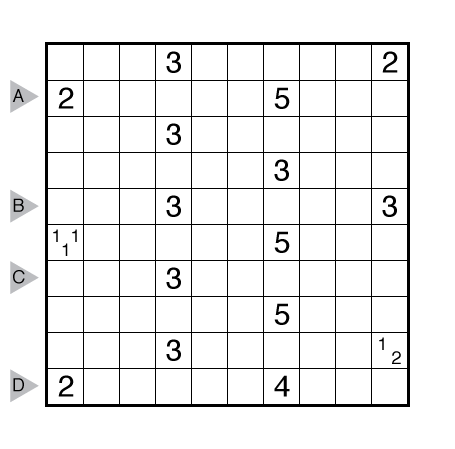
Ones and Twos by Grant Fikes (originally posted on 02/03/14)
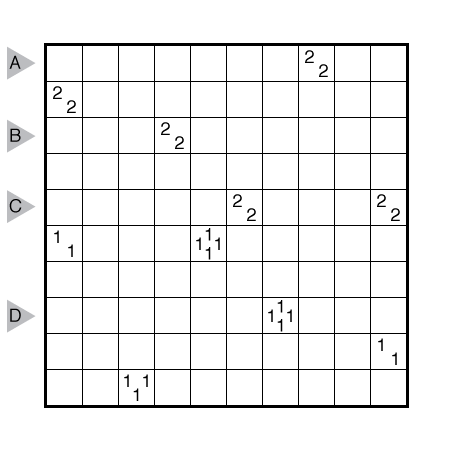
Threes by Palmer Mebane (originally posted on 12/16/13)
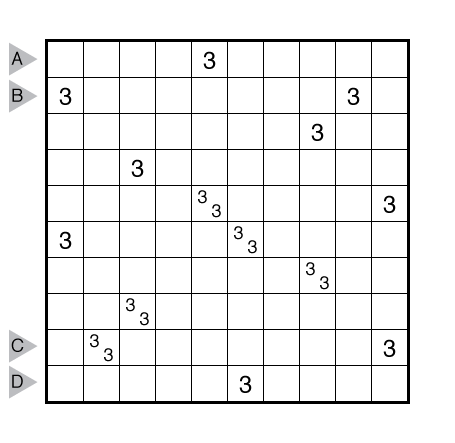
Follow this link for more easy Tapa.
Best Tapa:
4×4 Clueless Square by Serkan Yürekli (originally posted on 09/05/13)
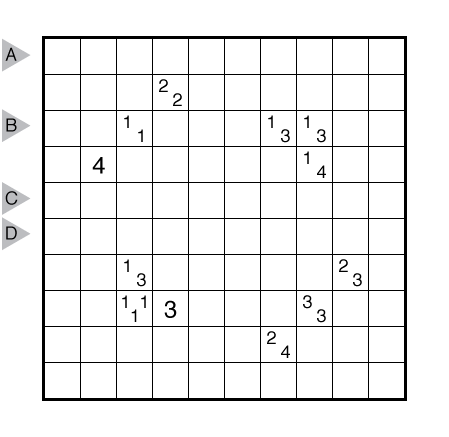
White Hole by John Bulten (originally posted on 10/08/14)
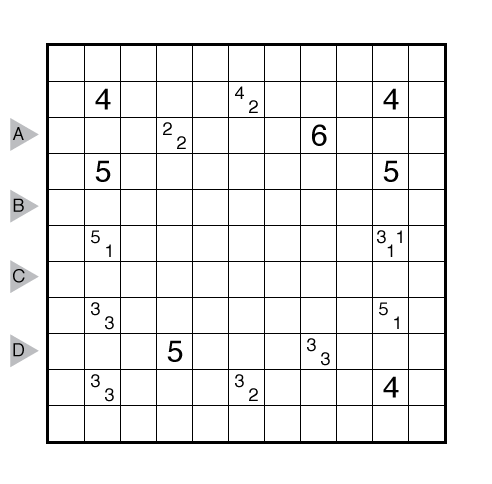
Group Think by Serkan Yürekli (originally posted on 09/21/13)
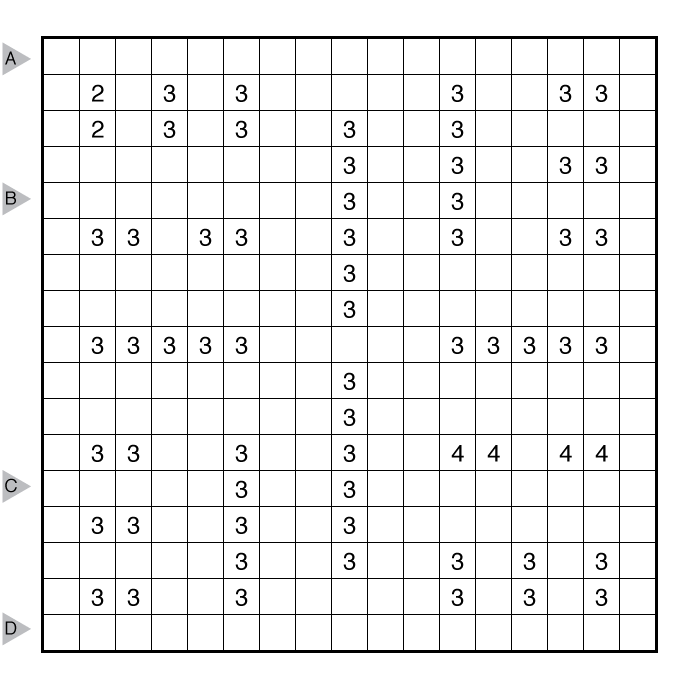
Four Squares by Murat Can Tonta (originally posted on 08/17/17)
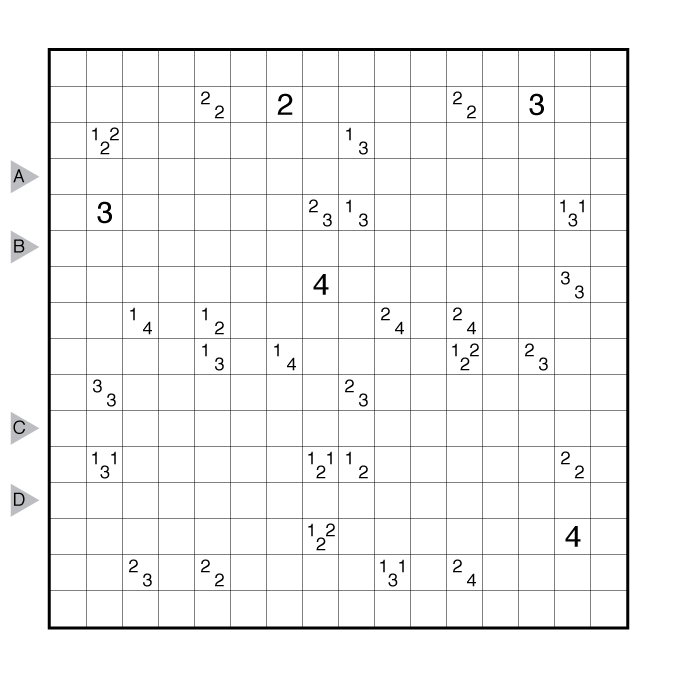
Antisymmetry by Tapio Saarinen (originally posted on 02/18/15)
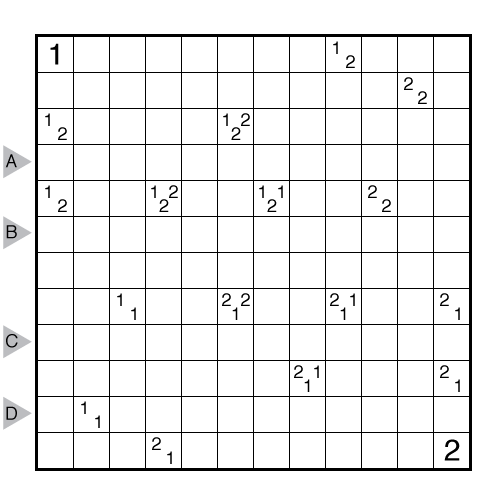
Follow this link for all of our classic Tapa.
Tapa Variations:
Question Marks by Serkan Yürekli (originally posted on 12/12/17)
Standard Tapa rules; also each question mark represents a positive integer.
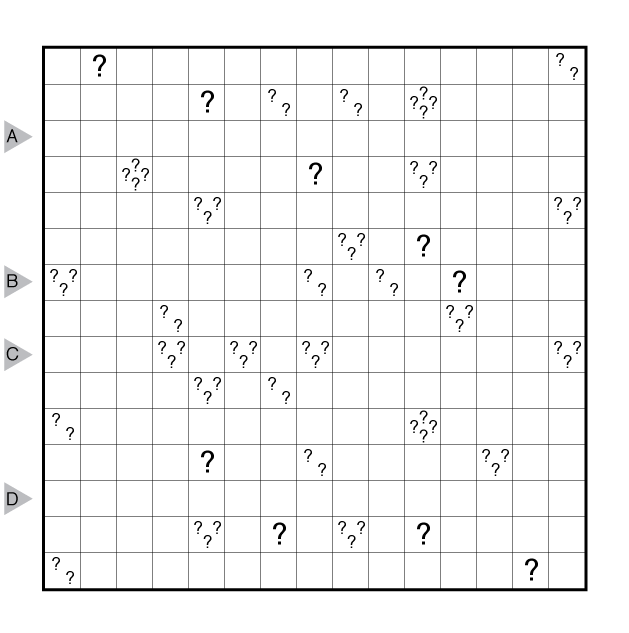
Tapa (Hex) by Prasanna Seshadri (originally posted on 02/03/15)
Variation of Tapa; instead of the normal 2×2 rule, on this hex grid no three cells in the connected Tapa can share a common vertex. All other rules apply.
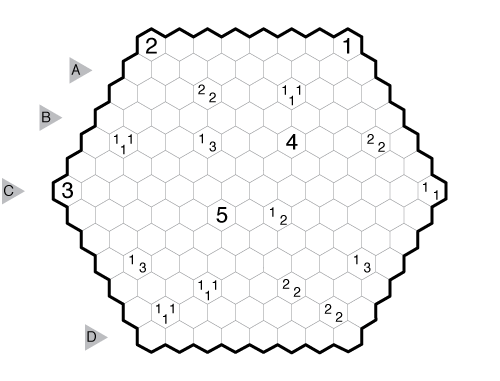
Tapa (Borders) by Serkan Yürekli (originally posted on 03/09/17)
Standard Tapa rules; also, if two cells are separated by a thick border, this means that exactly one of those cells is shaded and the other is unshaded.
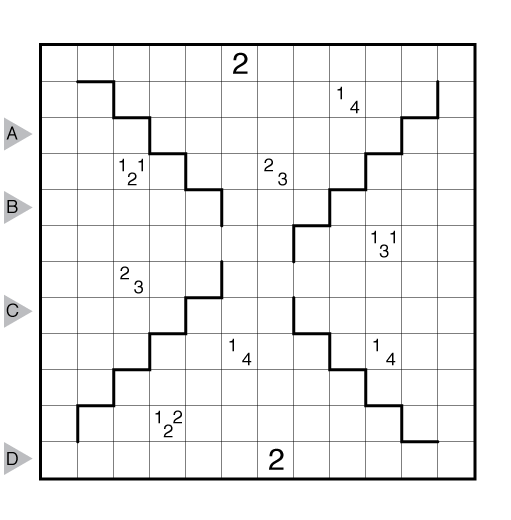
Tapa (Unique Clues) by Tapio Saarinen (originally posted on 01/16/15)
Variation of Tapa. All clues have been replaced by symbols, and each clue cell must be a unique value (e.g., 113 can appear at most once as a clue value). Each question mark stands for a nonzero number; each asterisk stands for a nonzero number of question marks.
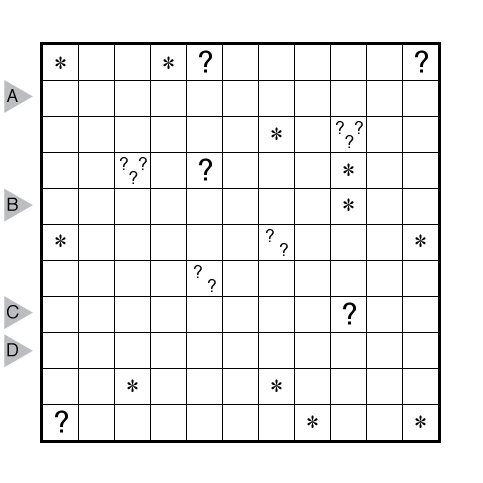
Follow this link for more Tapa Variations.
